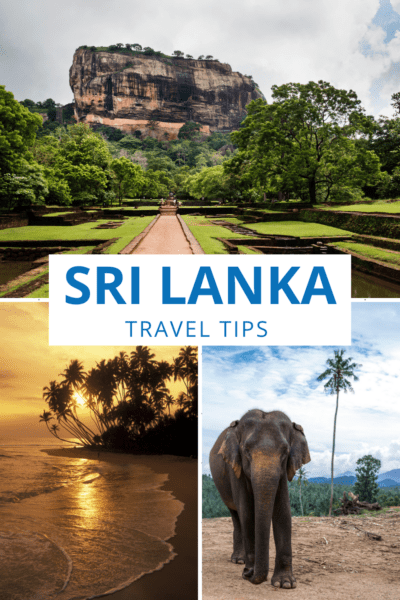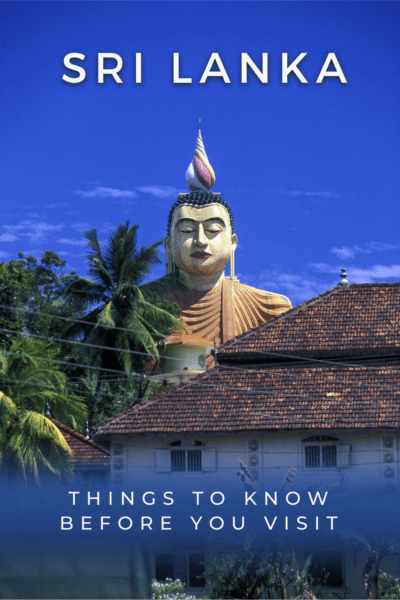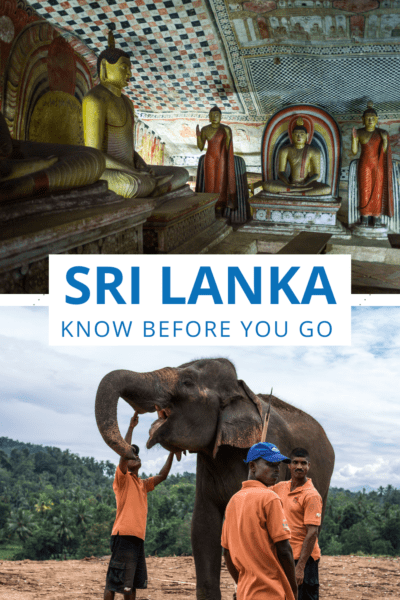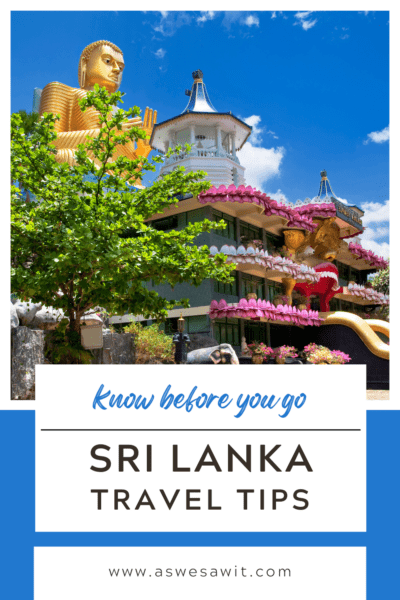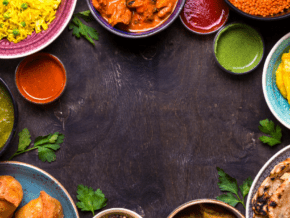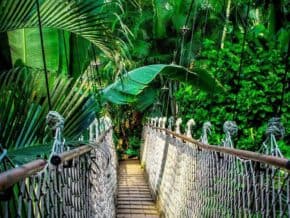Are you considering visiting Sri Lanka? Whether it’s for a relaxing beach holiday, adventurous sightseeing tour or cultural exploration; there are so many reasons to explore this enchanting island nation.
Before making the trip there are a few essential things that you should know before you jump on the plane. So read on—this article will help you get the most out of your trip!
1. Sri Lanka has amazing beaches
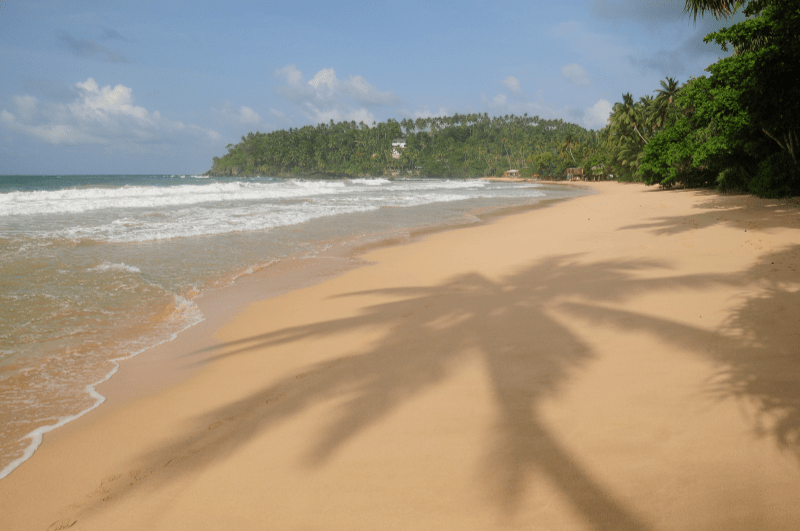
With a sun-drenched coastline that stretches over 1,600 kilometers (1,000 miles). Sri Lanka is certainly an ideal holiday destination for beach resorts and romantic getaways.
The most popular beaches can be found on the southern coast near Galle and Matara districts. They provide an ideal spot for swimming, snorkeling, scuba diving, fishing or simply lounging around under the warm sunshine. In addition to being great places to soak up some rays, many of these beaches also feature nearby restaurants with delicious local cuisine and plenty of shopping opportunities too.
If your goal is uninterrupted relaxation, consider visiting the unspoiled x, in the Matara district. Mirissa itself is one of the country’s best beach destinations and there are lots of sandy stretches to choose from. But the heavenly Secret Beach is the perfect spot for travelers seeking absolute serenity in a heavenly location.
2. Get your Sri Lankan rupees after you arrive
As the Sri Lankan rupee (LKR) is not a major currency, you often get better exchange rates once you arrive. If you do decide to bring in cash though, you can bring up to LKR 20,000 of local currency (Sri Lanka Rupee-LKR) into Sri Lanka without any restrictions.
Sri Lanka is a cash-loving country and cash is still preferred for most transactions. If you’re exchanging currency, ask for notes in smaller denominations (below Rp500) and don’t change more than you need.
The best exchange rates can be found at local currency outlets and ATMs, and you can easily find both in the airport and the main tourist areas. But don’t expect to find ATMs in every small village you visit.
ⓘ TIP: Stick to Bank of Ceylon ATMs when possible; they don’t charge a fee.
3. The wildlife is incredible
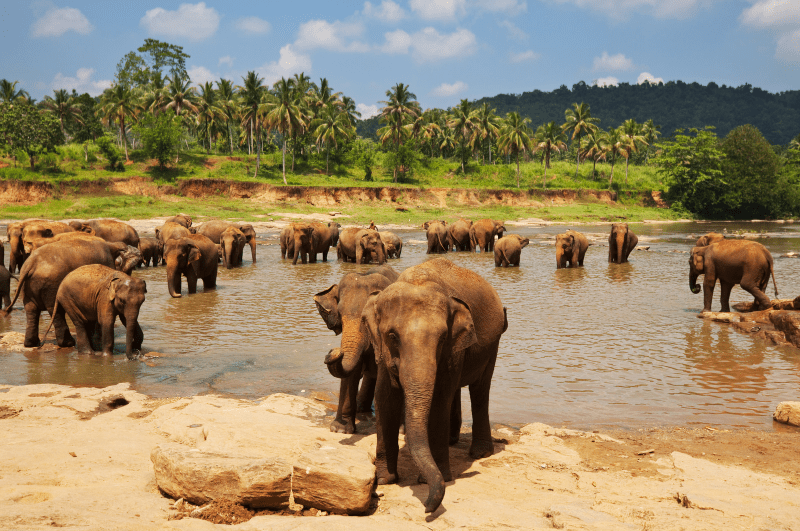
Sri Lanka is home to some of the most unique wildlife in the world; both on land and at sea. From elephants and leopards to aquatic turtles and fish, this country is a nature enthusiast’s paradise. Many endemic species can only be found on the island itself, including the painted-lip lizard, sloth bear, and purple-faced langur monkey.
The Sri Lankan government has also done an impressive job in protecting these creatures through national parks like Yala National Park and Bundala National Park.
If you’d like to see them in their natural habitats, consider booking a guided safari. Your guide will take you to the best places, point out the wildlife you might otherwise miss, and tell you more about the creatures in the area.
4. It’s easy to get around
Thankfully, getting around Sri Lanka is relatively easy no matter what your budget. Whether you’re looking for a convenient and affordable way to get from A to B or a more luxurious journey; there are plenty of transport options available.
Public transport. You can take buses and trains throughout the country. Also, many cities also have tuk-tuks, which are great for short distances.
Car rental. For the ultimate in flexibility, you can rent a car. This is far more comfortable and convenient, especially for long distances. Most agencies require an international driver’s license, though.
Taxi. If you don’t want to drive in an unfamiliar country, taxis are often cheaper than public transport depending on where you’re going. If you’re visiting parts of the country that are not well-served by public transportation, arrange private transfers with a local company instead.
5. Be prepared to haggle
Haggling is an art form in Sri Lanka – a skill that must be mastered if you want to get the best deals. It’s not about getting something for nothing, but rather finding the true value of what you’re buying, so everyone walks away feeling satisfied!
Here are some tips to bear in mind when haggling about prices:
- Decide what it’s worth: Before approaching the vendor, decide how much you’re willing to pay. If you don’t know the going price, do some research or ask locals what they would pay. This will help you avoid buyer’s remorse later.
- When bargaining, start low—my starting offer is usually 2/3 of their initial asking price. But, don’t go too far below their initial offer as this could offend them.
- If you’re interested in more than one item, try negotiating a bulk rate; it can often result in better discounts.
- Remember to stay friendly and polite while bargaining, even if negotiations become heated! Try not to take it personally and remember that haggling is part of local culture; so, accept it graciously and keep smiling throughout the process.
- Be willing to walk away. If you can’t come to an agreement, thank them, and move on. If they don’t chase you down to accept your offer, have faith that you might find something even better later.
6. Always carry cash
Even though Sri Lankan businesses are beginning to accept credit and debit cards, it’s best to always carry some form of physical currency with you. This way you’ll be able to make smaller purchases or pay for services that don’t accept card payments. The local currency in Sri Lanka is the rupee, so make sure you have enough on hand!
It’s also important to note that most ATMs will only allow withdrawals up to a certain amount per day (around Rs 50,000). Therefore, if you plan on taking out larger amounts of money than this then make sure you know which banks offer higher withdrawal limits beforehand. All things considered, having some cash handy during your trip can come in handy – especially when dealing with small-scale vendors or paying for transportation fees.
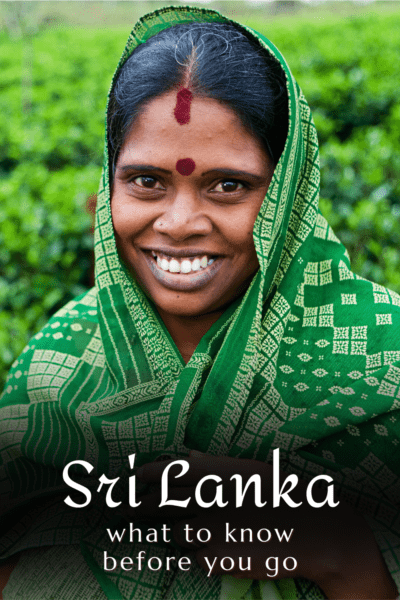
7. Only use your right hand
In Sri Lanka, as in many other East Asian countries, it is considered rude to use one’s left hand. Why? Because the left hand is reserved for “dirty” tasks like using the restroom.
So, make sure to eat with your right hand. While this etiquette applies to the majority of foods, including fruit snacks, desserts, and rice-based dishes like kottu roti and curries, it’s important to remember that you should always use a spoon when consuming soup or tea.
Using your right hand to eat isn’t just for meals; it’s also used in many other parts of daily life, like giving things to other people when you exchange money or shaking hands when you meet someone for the first time. Try to honor these customs as much as you can while you’re visiting Sri Lanka.
8. Everyone waggles their head
In Sri Lanka, you may come across the unusual form of communication known as “head waggling,” which expresses agreement or understanding without the use of words. People often nod their heads in agreement during conversations before shifting their heads back and forth to emphasize a point. They also use head nodding as a form of nonverbal communication to express approval or gratitude.
It takes some time to get used to this “waggle language’ but once you do, you’ll find yourself automatically responding with your own version! It may even become second nature after a while; don’t be surprised if locals chuckle at how quickly you’ve picked up on the gesture!
9. Tap water is not safe
The most crucial thing to keep in mind when trying to stay healthy and hydrated in Sri Lanka’s tropical climate is to stay away from tap water. While it may look clean, tap water isn’t safe for drinking and can cause a variety of illnesses. Therefore, you’ll want to always drink bottled or boiled water when traveling around this beautiful country.
Fortunately, there are plenty of ways to ensure your safety while still enjoying all the local cuisine has to offer – from boiling your own water at home to purchasing pre-packaged bottles of purified water in stores and restaurants. Many hotels provide their guests with complimentary filtered or distilled drinking water so guests won’t have to worry about purifying their own.
Beyond these options, you can also purchase special bottles, filters, or tablets designed specifically for purifying unsafe drinking sources like rivers or streams – great if you find yourself out on an adventure!
And of course, fresh fruit juice or tea can help you stay hydrated, as well.
10. Sri Lankans love their tea
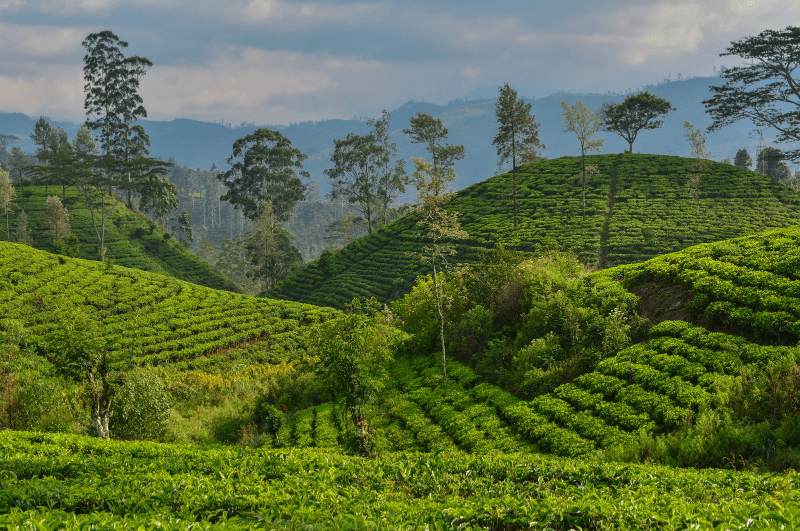
Sri Lankans are known for their love of tea, and tea culture plays a huge role in everyday life here. Taking time out to share a hot beverage with friends and family over conversation is so commonplace that many Sri Lankan people consider a cup of tea an essential part of any meal!
There is plenty of delicious tea to be found throughout the country – in fact, Sri Lanka is known for growing some of the world’s best tea. Tea plantations stretch across the island, making it easy to find quality loose-leaf blends or pre-packaged bags in most stores. Whether you’re looking for something light or dark, spicy or sweet, there will be something to suit your taste buds.
ⓘ INTERESTING FACT: Sri Lanka used to be known as Ceylon, and Ceylon tea is still a major export and source of pride for the country.
11. Public nudity is illegal
Like many other destinations around the world, Sri Lanka has strict laws against any form of immodest behavior, and this applies to citizens and visitors alike. Here are four main points everyone should know before their visit:
1) Public nudity is illegal according to Sri Lankan law; those caught exposing themselves can be arrested and even jailed for up to two years! Even if you’re visiting from another country with more lax attitudes towards clothing rules, it’s important to respect local customs and cover up when out in public spaces.
2) It doesn’t matter if you’re at the beach – swimming costumes must remain on at all times. In certain areas such as temples and religious sites, women may also need to wear a long skirt over their swimsuit in order to enter.
3) Any kind of sexual activity between unmarried couples could land you both in jail; homosexuality is still outlawed here despite recent efforts by activists to change the law. This means that same-sex relationships should not be displayed publicly either.
4) Topless sunbathing is strictly prohibited throughout the whole country so make sure your bikini top stays put! To avoid unwanted attention (or worse), stick to wearing light, modest clothing while outside your accommodation during daylight hours.
ⓘ TIP: Invest in a good travel guide before your trip; it will provide you with a wealth of information and insights that you won’t find anywhere else. This one is a best-seller on Amazon.
12. Every full moon is a holiday
Poya days (full moon days) are national holidays in Sri Lanka. because they mark an event or occasion related to Buddhism.
On these days, many businesses close down early while some may even remain closed altogether due to religious observances. Alcohol sales are also banned during this time, though restaurants and cafes will still be open for tourists looking for food or drink.
Poya days are a great time to learn about Buddhist traditions and rituals, as well as enjoy the celebrations going on around town. In cities, there are often fireworks shows with live music and street parades. You can take part in traditional ceremonies like alms-giving by giving food or clothes directly to monks at temples around the country.
Be sure to check the dates of these public holidays before you plan your itinerary, so that you can avoid having your travel plans disrupted and can take part in all the exciting events.
13. It’s almost always hot
Sri Lanka has tropical temperatures and high humidity year-round. But while the heat can make sightseeing more difficult, it also brings some amazing benefits such as lush vegetation. Everywhere you look you’ll find colorful flowers, palm trees swaying in the breeze and exotic wildlife roaming free – all thanks to this tropical paradise’s hot climate!
The best time of the year for visiting Sri Lanka is usually between January and April when the temperature is at its most temperate and rainfall is minimal – perfect for exploring outdoor attractions or relaxing on one of the country’s stunning beaches!
14. Sri Lanka has two official languages
Sri Lanka has two official languages: Sinhala and Tamil. Sinhala is the first language of the Sinhalese, who make up about 70% of the country’s population, while about 28.5% of the population speaks Tamil.
As with many countries around the world, English is widely spoken. It is used for official and business communication in Sri Lanka, and it is taught in schools, so many Sri Lankans are able to speak it.
Having said that, knowing a few words of the native tongue is always useful. You’ll be able to communicate more effectively with locals if you are able to understand a few basic Sinhala phrases. Even better, it might offer chances to make lifelong friendships while making new ones!
15. Tipping Is expected
Tipping is an expected part of the culture and customs in this country, so having a good understanding of when and how much to tip can help make your stay smoother.
In general, it is customary to give 10-15% gratuities for services such as meals at restaurants or taxi rides. It’s also polite to leave small tips for hotel staff such as housekeeping or bellhops if they are particularly helpful during your stay. Additionally, most people will round up the bill rather than paying exact change – which serves as an expression of gratitude in lieu of a formal tip!
At markets or other establishments where no specific payment amount has been determined beforehand, it is usually acceptable to give loose change as a gesture of appreciation towards those providing service.
Ultimately though, whether you choose to tip or not while traveling through Sri Lanka should depend on the level of service provided and your own personal preferences.
16. Plan ahead for the hill country trains
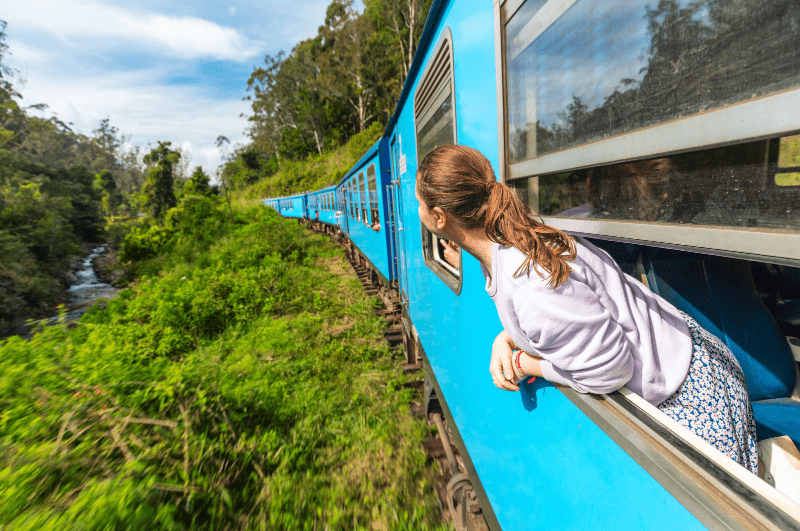
If you want to take the train in Sri Lanka’s Hill Country, it’s best to plan ahead. Train rides in this area are popular with tourists, and tickets for the observation cars, which have the best views, can go fast.
It’s best to buy train tickets ahead of time to make sure you get a seat, especially during busy tourist times. It’s also a good idea to check the train schedule ahead of time so you can plan your trip accordingly.
Here are a few tips to ensure your trip goes off without a hitch.
- Stations in the hill country tend to get crowded quickly, so make sure you arrive early to secure your seat or berth on the train.
- Purchase tickets at least one day before your journey to avoid long wait times that can come with overcrowded stations.
- Double-check departure times and verify ticket reservations prior to boarding the train as many trains run late, especially during peak season months.
- Plan your journey with some extra time in case of any delays as the trains in Sri Lanka’s Hill Country can be quite slow.
- The observation carriages, which offer the best views, can get quite crowded during peak tourist season. It is therefore advisable to arrive early to secure a good seat.
- There is limited space for luggage on the trains, so it is recommended to travel light and bring only what you need.
- There are food and drink vendors who walk through the train selling snacks and drinks, but it is also a good idea to bring your own food and water.
- The train journey through Sri Lanka’s Hill Country offers some of the most stunning views in the world, so make sure to bring a camera to capture the scenery.
17. You can’t avoid the mosquitos
Sri Lanka is known for its lush landscapes and stunning views, but one thing that travelers should be aware of before embarking on their journey is the prevalence of mosquitoes. Mosquito-borne diseases are a very real issue in Sri Lanka; areas near water sources or paddy fields tend to have higher concentrations of these pesky insects.
You need to know that certain types of mosquitoes can carry serious illnesses such as dengue fever, malaria, and chikungunya virus. While it’s impossible to completely avoid being bitten, taking preventative steps like applying insect repellent and wearing protective clothing can greatly reduce your risk of illness.
18. Sri Lankan cuisine is unique
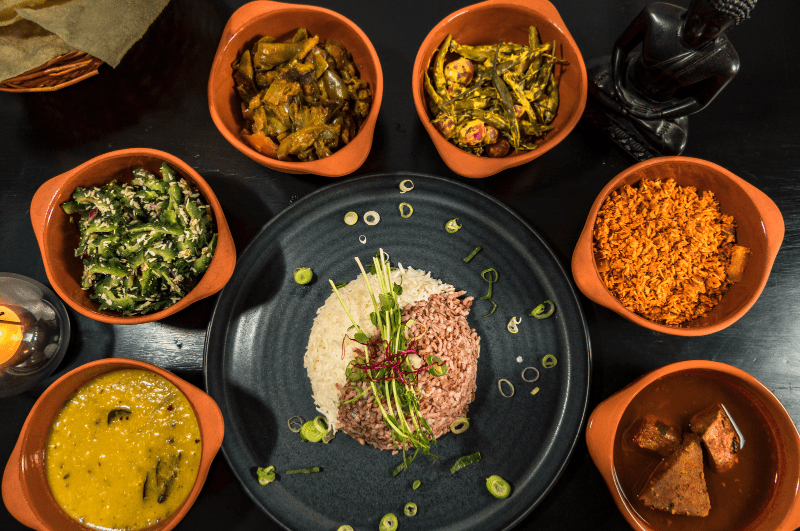
When it comes to food, Sri Lanka has an abundance of delicious and unique flavors, so the cuisine in this island nation is sure to tantalize even the pickiest of eaters. In fact, statistics show that over 400 traditional dishes are served in local restaurants!
The most important thing to know about Sri Lankan cooking is that spices play a major role in many dishes. Many recipes call for staples like cinnamon, cardamom, cumin, and curry leaves. So while it shares some similarities with South Indian cuisine, Sri Lankan food has its own unique flavor profile.
Sri Lankan food is known for being spicy, and the generous use of chilies is a common feature in most dishes. But there are many non-spicy dishes as well, and some restaurants may offer watered-down versions of spicy dishes for those who do not enjoy the heat.
Coconut milk is commonly used to add richness and sweetness; it can be found in everything from soups to curries. To really get a taste of authentic Sri Lankan cuisine, be sure to visit some of the local eateries as they often serve up classic recipes with their own special twist.
ⓘ TIP: You can reduce the spiciness of a dish by pairing it with a yogurt- or coconut milk-based drink.
Finally, don’t forget dessert! Traditional sweets like kavum or coconut pancakes are popular choices after dinner, and fruit salads dressed with freshly squeezed lime juice make perfect treats during the hot summer months. Whether it’s savory or sweet, you are certain to find plenty of delicious options at every turn while visiting Sri Lanka!
19. You’ll have a great time
When it comes to planning a vacation, Sri Lanka is an ideal destination. With its stunning landscapes, fascinating culture and friendly locals, there’s no doubt that you will have a great time here!
Even if they may seem intimidating, don’t let any cultural differences stop you from enjoying all this beautiful country has to offer. Take it one step at a time and soon enough it will all feel familiar—almost like slipping into an old pair of jeans.
No matter how long your visit may last or where you decide to go, Sri Lanka has something special waiting for you. So, book your flight and start packing today. With these tips in mind, an open heart, and a spirit of adventure, you’re guaranteed a memorable experience like none other!

